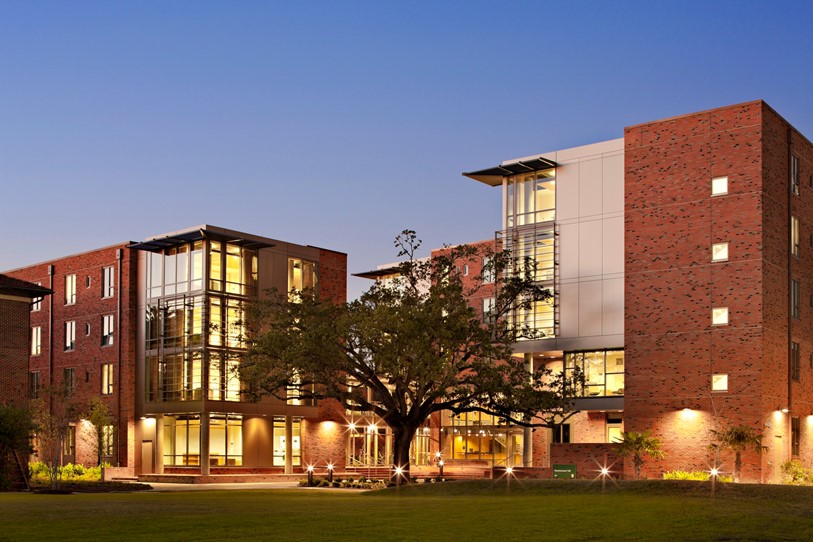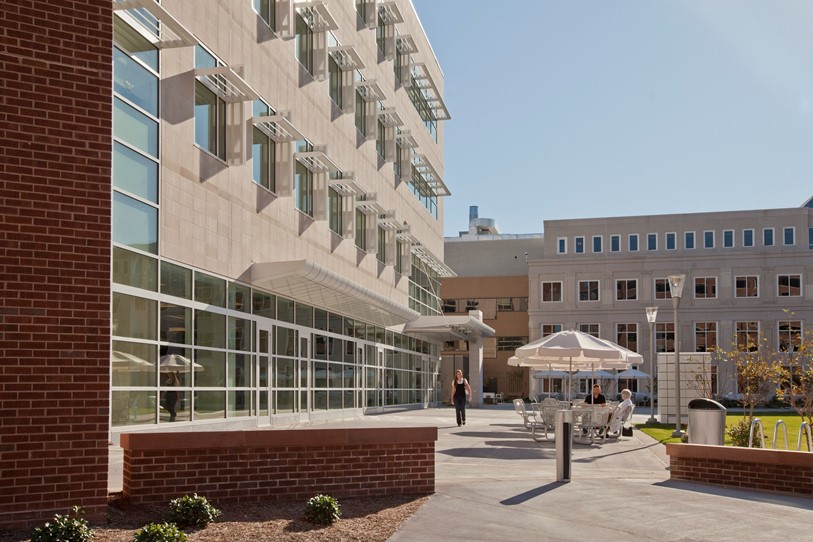Defensible Space – Student Security on Campus
Higher education campuses have long been designed as open spaces that welcome students, faculty and community. Modern buildings also strive for openness.
Yet we all recognize that, in today’s world, securing campuses for emergencies, from natural disasters to active shooters or acts of terrorism, must also be considered. From our vantage point as architects and designers, we're now hearing administrators asking questions they’ve never asked before. Do doors open inside or out? Will bathrooms provide shelter or just be places to become trapped in an active shooter event? We've even heard one student, as he admired a new campus building, ask: "How will they lock this down"?
We don't think that safe campuses have to resemble fortresses. We do think that administrators want to retain the welcoming, inspiring and even spiritual feel of higher education campuses. Whether building new or renovating or maintaining existing spaces, there are several design issues that can easily improve campus security and safety, including:
Quality Lighting.
This can increase the perception of safety and maybe even diffuse potential threats. With new designs or improvements to existing spaces, eliminate dark corners inside and outside buildings. Make sure walkways, common areas and spaces between buildings are lit with non-glare light sources to increase visual clarity in spaces such as hallways, stairwells, sidewalks and parking lots.
Decorative Safety Buffers.
Site elements that prevent potential attackers from driving right up to a door or gathering area. Civic spaces with a variety of decorative elements and seating outside building entrances, for instance, can reduce risk and also provide a space for staff and students to routinely mingle. The new Sandy Hook Elementary school in Connecticut, built after the tragic shooting there in 2012, includes many "invisible" security features, including open areas so people inside can more easily see who is approaching and a rain garden that acts as a buffer between the building and the bus drive.
Sight Lines.
Using straight, unobstructed sight lines reduces potential hiding spaces and creates spaces that can be easily surveyed. Blind corners, curves and alcoves should be kept to a minimum. Low growing or dwarf landscaping of 24 inches with canopy trees trimmed to a minimum of eight feet clear eliminates hiding places and provides continuous sight lines. From inside building lobbies, it is best if one can see who is approaching. Likewise, by orienting offices to face major corridors, occupants will be encouraged to be aware of their surroundings and facilitate early threat detection. Glass doors and windows also allow approaching persons to be more easily seen. Good visibility can, not only deter crime, but also fosters a sense of security among people in the community.
In future posts, we'll address a range of other issues that are increasingly important, including residence hall security, the importance of community to campus security and the role of technology.


